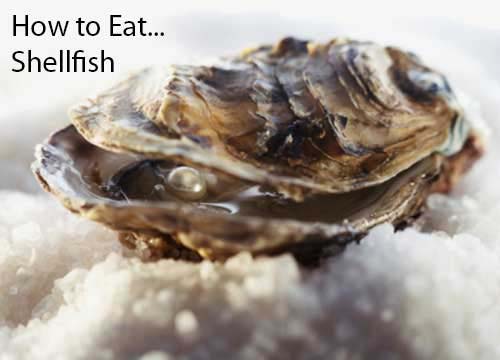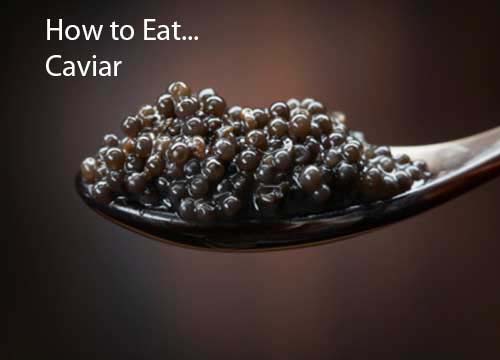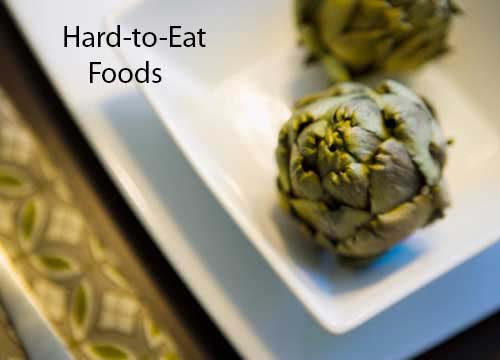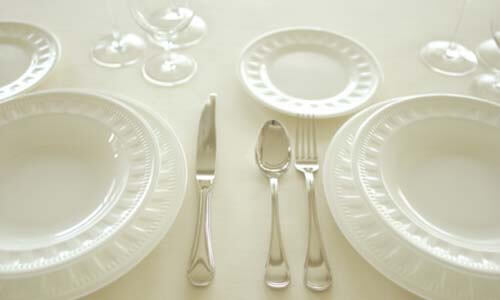Judging Food
Being critical does not mean disliking foods. The more you learn, the more shortcomings you will find, but-at the same time-the more pleasures you will discover in everyday fare. Before you can competently assess food, you need to understand the roles played by your senses. You also need to know what you should be looking for when the waiter sets the food before you.
sensory mechanisms
You judge foods with five primary sensory mechanisms:
- Taste
- Smell
- Touch
- Sight
- Hearing
You also use these senses:
- Temperature
- Pain
- Kinesthetics
- Common chemical
Most people confuse flavor with taste. These two words are not synonymous. Flavor and taste are no more interchangeable than Pennsylvania and Philadelphia. The second word in each pair is a subunit of the first. Your sense of taste is limited in scope to what your taste buds can detect. Flavor is a composite term embracing taste, smell, and mouth feel. (This last word describes the sensory responses other than gustation that take place on your lips and within your mouth. Touch, temperature, pain, kinesthetics, and the common chemical sense all help determine mouth feel.)
French onion soup is my favorite vehicle for illustrating the multidimensional concept of flavor because that preparation can stimulate all nine types of receptors involved in flavor assessments. In a single spoonful you can experience the sweetness of onion (taste), the aroma of thyme (smell), the pungency of ground peppercorns (pain), the warmth of the liquid (temperature), the sogginess of the floating toast (touch), and-as you slightly chew-the elasticity of the melted cheese (kinesthetics). If the soup was cooked in an old-fashioned cauldron, you can also detect iron through your common chemical sense.
You also use your sense of sight when you assess the visual appearance of the steaming soup in the bowl. Ears can come into play, too. In some cultures you are expected to make a slurping sound when consuming soup. Your perception of the onion soup is the sum of the various impressions you receive simultaneously. Each sensory mechanism detects a different sensory property of the food and flashes its report to your brain.
Sweet, sour, salty, and bitter are your four basic types of taste buds. The sweet-responsive ones are concentrated on the tip, the sour and salty ones on the sides, and the bitter ones on the rear top of your tongue. The sequence in which you taste the different foods can alter your sensory perceptions. If you take a bite of an apple before taking a sip of wine, the tartness of the wine will be magnified. Cheese, on the other hand, improves the wine's flavor. Hence this wine-merchant saying: "Buy on apples. Sell on cheese." By closing your eyes, you can usually perceive more flavor and texture subtleties because visual distractions are eliminated. You can achieve nearly the same effect with your eyes open if you train yourself to give the food your full-undivided attention while eating. To increase the perceived intensity of a food's scent without awkwardly leaning over the plate, directly face the dish with your head slightly tilted back. Then take a short series of quick sniffs. Pay special attention to the first and last bite of a food. Generally, these two morsels give you the most enjoyment.
what to look for
Discerning diners know how to spot culinary shortcomings. Here is a sampling of some of the indicators to look for when analyzing certain foods:
Baked Potatoes: These tubers should be fluffy and mealy, not mushy. This negative quality is the result of being baked in foil.
Eggs: If you receive. a rubbery fried egg, it was cooked at too high a temperature. If you see a green line between the yellow and white portions of a sliced hard-cooked egg, the egg was most likely boiled rather than simmered (as it should have been), or it was cooked too long. Such an egg will also emit a sulfuric scent. An omelette that is watery, flat, and dense is poorly made.
Fish: The flesh should not be mushy, watery, dried out, or scorched. It should be white (if applicable) and void of a fishy odor and petroleum taste. The latter attribute suggests that the fish was caught in a harbor teeming with motorboats. If filleted, the meat should not be shoddily boned. When ordering a whole fish, ask that the raw specimen be brought to the table for your scrutiny. Its eyes should be bright and clear, its body plump, its scent sea sweet, and its gills red.
French Bread: A good loaf has a chewy as opposed to cottony texture. Its internal air pockets are tiny. The bread has a thick crust.
French Fries: Poor ones are greasy, soggy, burnt, rancid, or over-salted. Some are made from rotten or sloppily peeled potatoes. French fries should be served hot and within ten minutes after they're made.
Frozen Entrees: If the interior of an entree like a chicken breast has a cold spot, the food was probably frozen. The same is true if you see droplets of water (melted ice crystals) floating on top of the thawed sauce. An abnormally mushy texture is also a clue.
Garlic: A bitter flavor results when the garlic has been scorched. Garlic should never be sautéed for more than two or three minutes-and never at high heat.
Ham: The lower the grade, the more watery the texture and the more evident the chemical taste will be.
Hamburger: Deplorable burgers are compact, crumbly, and made with gristle-laden meat. A burger should be thick (for the sake of juiciness) and prepared from freshly ground beef.
Ice Cream: Quality ice cream melts slowly and has a creamy fullness. It should not have a chalky mouth feel or chemical taste.
Lamb: For optimum tenderness and delicate flavor, lamb must not be cooked beyond the medium-rare state of doneness. A muttony aroma indicates that the meat is not from a young animal, which it should be.
Liver: If it is leathery, juiceless, and gray-hued, the liver is overcooked. Properly cooked liver has a rosy interior. Calfs liver is preferred to beef liver since it is more tender and subtly flavored.
Melons: If a melon lacks characteristic sweetness, the fruit is unripe and possible immature. Mushy flesh means the melon is past its prime.
Mussels: The mussels should be devoid of their beardlike growth. The flesh should be plump and sandless.
Onion Rings: If they lack texture, the onion rings are probably a factory product reconstituted from paste.
Pasta: If the pasta is pasty, it was very likely cooked too long, in too little water, or below boiling point. A low-grade brand is also' a possible culprit. Pasta cooked at dente has a satisfying mouth feel.
Pate: You can distinguish a freshly made from a canned pate because the latter will have a metallic note and be over-salted and laden with the type of chemicals associated with hot dogs and luncheon meats. A pate is also substandard if it is grayish, dense, crumbly, greasy, bitter, or blandly or unevenly seasoned-or served refrigerator cold.
Pepper Mill: If the grinder is filled with low-grade peppercorns, the flavor will be harsh rather than relatively smooth and sweetly aromatic.
Pickles: A pickled cucumber should be vibrant green, not pallid or brownish. The texture should be firm and the taste not too biting, salty, or sugary.
Pies: The filling should not be runny (as are those made with commercially canned products). The crust should not be soggy, greasy, doughy, or scorched. With few exceptions, pies should not be served refrigerator cold.
Prime Rib: The largest and most tender prime rib is the one cut immediately next to the loin section of the steer (request that specific cut when you order). The least desirable prime rib is the steak cut nearest the chuck (shoulder) section.
Rice: The rice is overcooked if mushy, undercooked if the center of the grains are still hard. Rice should not be dried out (this indicates it has been cooked too far in advance). Neither should it have picked up a pot odor.
Salads, Iceberg Lettuce: The worst salad green is iceberg lettuce. Its surface is so impenetrable that all but the gooiest of dressings will easily slide off the leaves, collecting in a wasteful pool at the bottom of the bowl. Iceberg lettuce is also bland. Most chefs nevertheless use iceberg lettuce because it is less expensive and perishable than superior greens such as Bibb, Boston, and Romaine. (Iceberg, however, does have a pronounced crispness which is desirable in sandwiches and tacos.)
Salads, Other: There are several causes for soggy salads: the washed leaves were not thoroughly dried prior to being tossed with the dressing; too much dressing was used; the salad was mixed too far in advance. For crisp leaves, the salad should be dressed no more than five minutes before it is served. A salad is inferior if it is gritty, too oily or vinegary, or made with poor quality ingredients such as rancid or garlic-powdered croutons, greasy or artificially flavored bacon bits, and oxidized mushrooms.
Sauces: A taste of raw flour indicates an undercooked sauce. Those that are pasty, soupy, gummy, or too acidic, alcoholic, or sweet will never do justice to the entree. Neither should the flavor of the sauce mask the food it is supposed to enhance (though some restaurants do it intentionally-for example, by camouflaging the unfresh flavor of shrimp, clams, or oysters with an overpowering horseradish-infused tomato sauce). A sauce from one preparation should not mingle with another food on the same plate.
Shish Kebab: These grilled specialties will be annoyingly chewy if made with gristly meat. Likewise if the meat comes from a less than-tender cut of meat that was insufficiently marinated.
Smoked Salmon: Negative signs include paleness, mushiness, dryness, and excess saltiness. Meat from the belly is fattier, juicier, and more flavorful than that cut near the tail. However, you don't want the first few slices off the head end of the salmon. These pieces tend to be overly salty because as the salmon hangs by its tail during the curing process, the brine gravitates downward and concentrates.
Sole: All soles do not taste alike. A gray sole, for instance, is tastier than the less expensive lemon sole.
Soufflé: It should not be scorched or fallen or have an undercooked interior. A soufflé is only as good as the quality of its filling or chief flavoring agent, be it cheese or chocolate.
Soups: Most of the soups I've encountered are bland (except for being over-salted), watery, and short of the featured ingredient. They are often made with chemically processed bouillon cubes or canned soup bases, served tepid, or taste like yesterday's dishwater. You can almost make an overall assessment of the quality of a restaurant by tasting this single dish because conscientious chefs take their soups seriously.
Squid and Octopus: A rubbery texture indicates it was overcooked. The smaller the mollusk for its species, the sweeter and more delicate the flavor.
Steaks: Tenderness is only one of several qualities that a great steak should possess. Although a filet mignon may be fork tender, it may also be mushy and virtually flavorless because the restaurant or meat supplier used chemicals to tenderize the meat. If the steak was USDA Prime Grade, there would be no need to subject the meat to a dose of chemicals.
Stews: Substandard stews are floury or watery. The meat is often tough, stringy, and skimpy. Chefs usually overcook the vegetables and season the stew with a heavy hand.
Toasts: Burnt toast is not only distasteful and unappealing, it may be unhealthy. According to scientific studies, the carbon on burnt bread, muffins, bagels, or any type of food is carcinogenic.
Tuna Salad: A decent tuna salad should not be stretched with celery. Neither should it be made-with an inexpensive canned tuna which is excessively oily and easily mashed.
Vegetables: Frozen vegetables tend to be mushy and faded (though frozen legumes like peas and green leafy vegetables like spinach suffer less damage). Canned vegetables are even worse and have a metallic taste. Fresh vegetables should be properly washed, trimmed, and cut. When cooked, they should not be soggy or wilted--or have lost their fresh farm flavor and vivid hue.
Whipped Cream: In many restaurants the "whipped cream" is neither whipped nor cream, and smacks of chemicals. Penny-pinching chefs use aerosol bombs with ingredients that read: water, partially hydrogenated vegetable oil, sugar, com syrup, hydroxypropyl methylcellulose, artificial flavor, polysorbate 60, sodium stearoyl-2-lactylate, salt, mono-and diglycerides, artificial color. Nowhere in the above roll call is there any substance which came from a cow's udder.
Other Tips
The following tips and insights, which concern judging foods in general, should also prove helpful to you.
Herbs and Spices: Seasonings are designed to bring out and enhance the good natural flavors of the primary cooking ingredient. With a few exceptions, such as dill soup, a particular seasoning should not be too obvious. It should speak so unassumingly that you "hear" its individual flavor notes only when you make a conscientious effort to do so. Even in the case of blends like curry, no one aromatic spice-be it cumin, saffron, cardamom, or coriander seed-should overpower the other ingredients.
Whatever the combination of herbs and spices and other flavoring agents, it should not be used with a heavy hand, a transgression especially common among novice chefs. Neither should the chef be timid, as is the case in many restaurants which try to appeal to the broadest possible audience. In their attempt to please all, they excite few palates.
Variation is important, too. Rosemary is an excellent pan mate for lamb, but when any classic affinity becomes routine, the dish becomes routine as well.
Low-grade herbs have a grassy, hay-like flavor. Their opposite numbers have a fresh, spring-like quality.
Hot and Spicy Foods: I frequently hear diners say, "This is the best Sichuan food I've ever had-it's so hot." If quality is the equivalent of hotness, then a robot could be a gourmet Sichuan or Tex-Mex chef. It takes no particular talent to add more chilies to the pot. "
Look for more than fire when you evaluate a dish. Each chili variety has its unique flavor, which should be apparent and fresh. Take into account the qualities of the other ingredients in the dish and their synergetic relationship.
There is an easy method, incidentally, to tell if a dish was served with chili peppers or peppercorns. The chili is significantly hotter and has a pronounced effect on the sensory receptors on the front of your tongue. A peppercorn's character is perceived mostly at the back of the tongue.
Cooled Foods: Restaurants that allow hot foods to cool to lukewarm temperatures are doing you a great disservice. The foods will be less flavorful and the sauces will prematurely congeal into unappetizing masses.
The causes of cooled foods are several. Perhaps the preparation was precooked and stored in a warming oven, over a water bath, or under a heat lamp that was insufficiently hot: (Even if the method used provided enough warmth, the food still suffers. Ultraviolet lamps, for instance, will quickly parch foods.)
Another possibility is that the food sat too long on the kitchen counter waiting for the waiter to fetch it. Or the food was served on an unwarmed plate (a cool platter rapidly absorbs heat from food).
Visual Appearance: The serving should be pleasing to the eye in terms of layout and color contrast. Foods on the plate should not overlap, as they usually do on a Tex-Mex combination platter.
Portions: Lilliputian servings are as despicable as Brobdingnagian ones. The first is tightfisted, the second gross.
The Pleasure Formula: I have noticed that the degree of dining pleasure often varies in direct proportion to a diner's expectations. The more you expect, the less likely you will be satisfied. This principle of human nature can be expressed in the following formula, where P stands for pleasure, Q for the quality of the dining experience, and E for the diner's expectations
FORMULA
For some other diners, pleasure is a self-fulfilling prophecy: the more money they spend, the better the food will seem.
Another pleasure variable is the people at your table. They can make a fine meal seem dreadful or a mediocre one divine. As I heard in Shanghai: "The devil gives us our relatives, but, thank the gods, we can at least choose our dining companions."
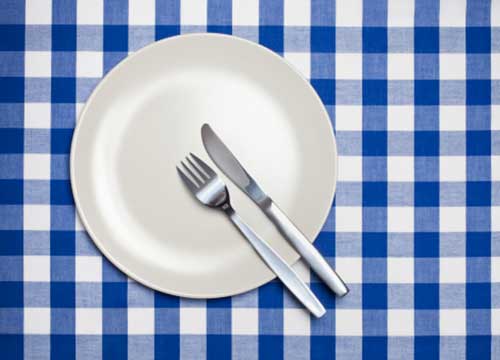
Our resting utensils etiquette section covers the rules (american and continental) for resting your utensils when taking a break from eating, when you are finished eating, and when you are passing food [...]
Read More
